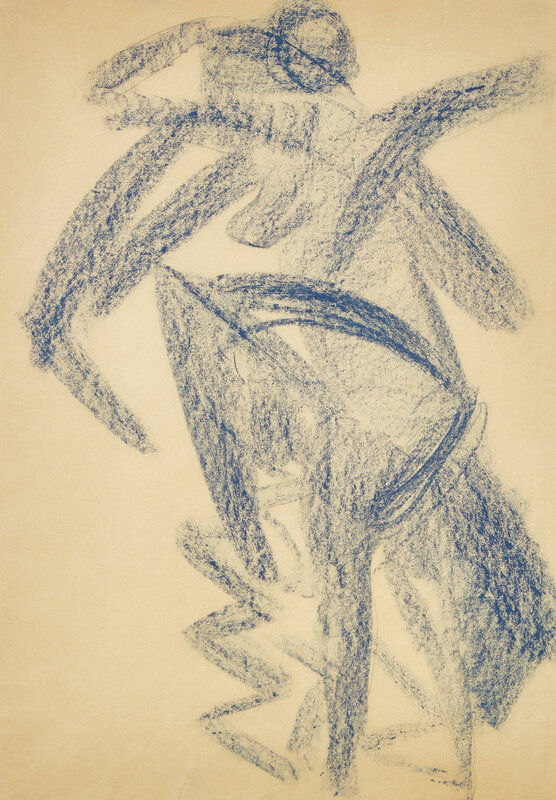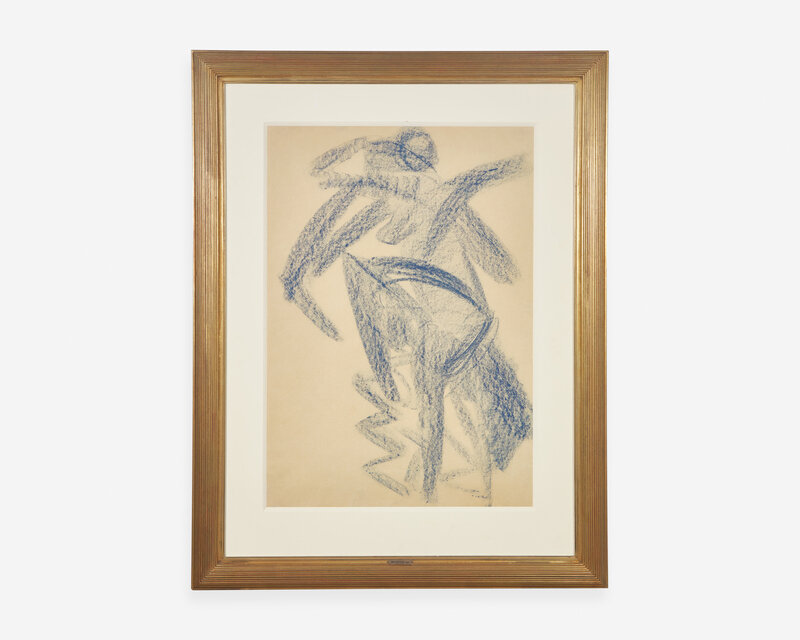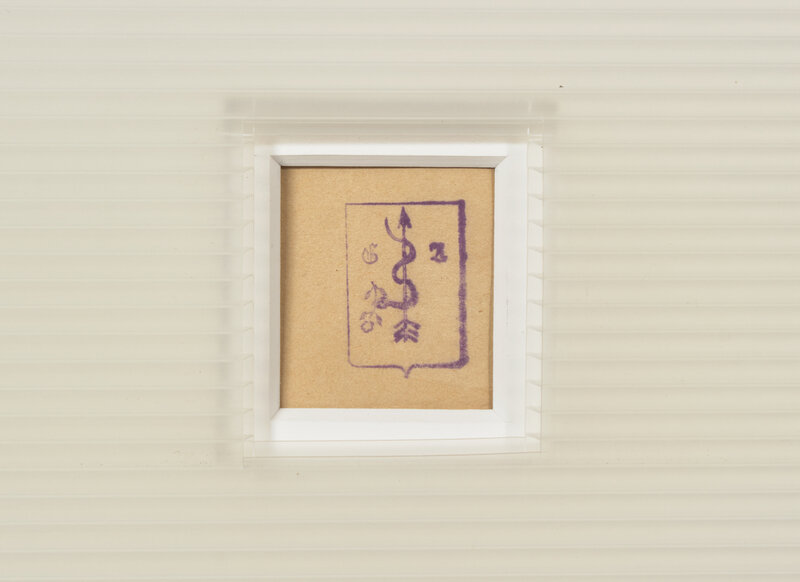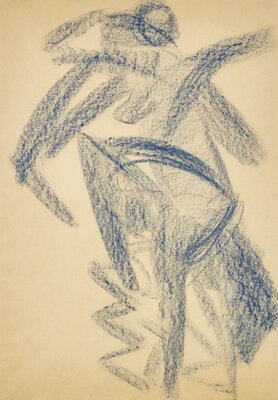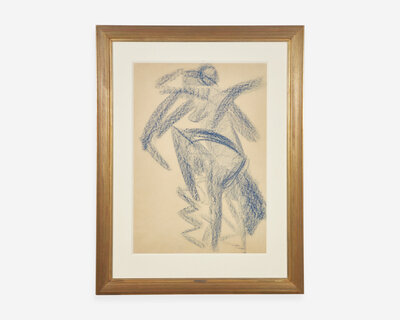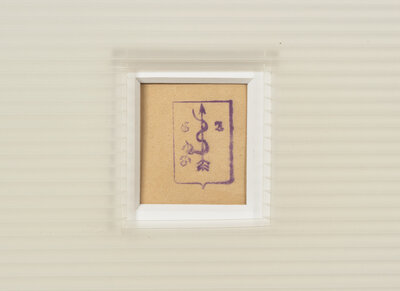Constantin Brancusi
(French/Romanian, 1876-1957)
Untitled (Danseuse), c. 1912
Sale 2087 - Impressionist and Modern Art, Featuring the Collection of John and Rosetta Gernon
Oct 28, 2024
12:00PM ET
Live / Philadelphia
Own a similar item?
Estimate
$60,000 -
80,000
Price Realized
$63,500
Sold prices are inclusive of Buyer’s Premium
Lot Description
Constantin Brancusi
(French/Romanian, 1876-1957)
Untitled (Danseuse), c. 1912
Blue crayon and pencil on buff paper
With a collector's mark (verso)
Sheet size: 29 3/8 x 20 3/4 in. (74.6 x 52.7cm)
This lot is located in Philadelphia.
The Collection of Laura Pels, New York, New York.
The authenticity of this work has been confirmed by Mrs. Margit Rowell. It will be accompanied by a Certificate of Authenticity.
Provenance:
Collection of Guillaume Apollinaire, Paris
Étude Courturier Nicolay (Hôtel Drouot), Paris, sale of April 30, 1993, lot 102 (erroneously attributed to Nathalia Gontcharova).
Acquired directly from the above sale.
Collection of Jean Chauvelin, Paris.
Galerie Lucie Weill & Seligmann, Paris.
Acquired directly from the above.
Lot Essay:
Simplicity is not an end in art, but we arrive at simplicity in spite of ourselves, as we approach the true sense of things. - Constantin Brancusi
Constantin Brancusi was born in 1876 in Romania, a region known for its rich traditions in craftwork and woodworking. At the age of seven, he was put in charge of herding his family’s sheep through the Carpathian Mountains. Yearning even then for a different path, he began his artistic experience through several apprenticeships in small studios, where he learned to carve chunks of wood into utensils and tools. At eighteen, he enrolled in school and then headed to Paris after graduation. This journey took a long 18 months, due to the young artist’s lack of resources, with stops in Vienna and Munich, travels that would inspire him throughout his life. He continued his studies at the École Nationale des Beaux-Arts and through a brief apprenticeship in Rodin’s studio, a position he left after two months, saying “nothing grows well in the shadow of a big tree.” (David Lewis, Constantin Brancusi, George Wittenborn Inc., New York, 1957, pp. 10)
For the next two years, Brancusi worked entirely alone; in 1907-08, he began to develop the unique, revolutionary language that would propel him to become known as one of the fathers of Modernism. “Every day I would model a new sculpture,” he remarked several years later, “and in the evening I would destroy it.” (Ibid., pp. 11) Folklorically influenced and primitively abstract, Brancusi searched for what he would refer to as the essence of the form throughout his oeuvre. Though always something of an outsider, he nevertheless fell into the world of the Parisian avant-garde easily, befriending artists such as Amedeo Modigliani, Louise Bourgeois, Pablo Picasso, Man Ray, and Marcel Duchamp. Various movements attempted to claim him – de Stijl, Surrealism, and Cubism – but Brancusi valued his independence, especially as his radical experimentation began to attract an international audience. In 1913, his work was included in both the Salon des Indépendants and the Armory Show, the first major exhibition of modern art in America.
Untitled (Danseuse), c. 1912, exemplifies the gestural yet elegantly minimalistic style of Brancusi’s developing career. The artist craved spontaneity in his sculptural poses, which he practiced through drawing, taking advantage of the immediacy of the medium to capture the poses of people, particularly dancers, as in this example of twisting figure. He completed a relatively small output of works on paper, mainly as gifts for his friends and patrons visiting his studio. A marriage of simplified biomorphic abstraction, the present work conveys stylized fluidity and movement in tightly controlled yet expressive contours, the contrasting layers adding dimension and depth to the page.
Of equal note is that the present artwork was originally owned by Guillaume Apollinaire, one of the foremost poets of France whose work foreshadowed Surrealism, and who was also an impassioned defender of Cubism. There is little concretely known about a friendship between Brancusi and Apollinaire, but it is clear that they knew each other. Starting in 1910, Brancusi attended the “mardis soirs” organized by Paul Fort at the Closerie des Lilas, which was also attended by Apollinaire. That same year, upon the death of the artist Henri Rousseau (with whom they were both very close), Brancusi incised an homage by Apollinaire on Rousseau’s tombstone. Brancusi also attended Apollinaire’s funeral in November 1918. This storied provenance further emphasizes the drawing’s deep connection to Modernism of the early 20th century.
Condition Report
Auction Specialist
